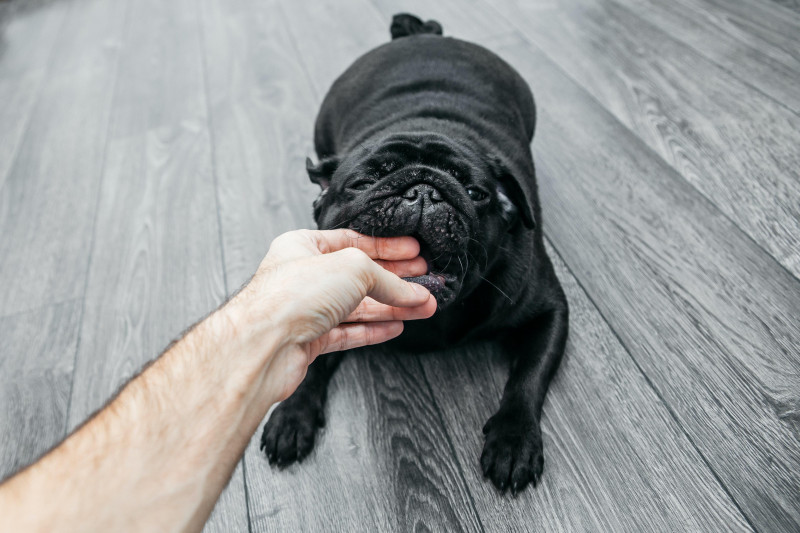Signs that a dog is about to bite and what you can do about

As much as we might wish it, our furry four-legged friends cannot speak our language. Unfortunately, this can make it difficult to know what they want or what they are going to do.
However, it is possible to read a dog’s body language to help us interpret what they want, how they are feeling, what they are thinking, and what their next actions may be.
That is why it is a great idea for people to familiarise themselves with a dog’s normal and abnormal behaviours, and how dogs communicate through their movements.
This is typically most important when it comes to identifying what may turn into potentially aggressive behaviour, and can be useful in preventing negative situations.
To help you with this, read on to discover some of the most common signs that a dog is about to bite and what you can do about it.
Growling and snapping
Probably the most obvious signals that a dog may be about to bite. Dogs growl and snap to let you know that they are uncomfortable or unhappy and want to be left alone.
Although seeing a dog growling and snapping can be scary to us, understand that it is a dog’s way of communicating to us that they are uncomfortable or unhappy, without actually harming anyone.
Pay attention to when they growl and snap and look out for patterns. Does this happen when food or toys are involved, when you touch them in a certain place, or when strangers, men, women, or children approach?
This can help you to identify what your dog does not like so that you can try to prevent this from happening and give them space when they need it.
Raised fur
A dog’s hair can stand up along its neck and back when it is anxious, scared, angry or with some, excited.
If your dog has raised hackles, it is best to air on the side of caution and give your dog time and a safe space to calm down.
Rigid stance
Happy, comfortable dogs are usually visibly relaxed and at ease.
If a dog has a rigid body posture, with a stiff body and alert ears and tail, this is a sign that they are in discomfort and that they may bite if you give them unwanted attention.
If they freeze up when you go near them, they are scared and you should back away, and maybe even leave the room to give them the space they clearly need.
Cowering and tucked tail
If a dog is cowering or has its tail tucked between its legs, they are likely to be scared.
As tempting as it can be to go up to a dog to pet them or to try and reassure them, this can do more harm than good and make them more scared.
You should not get too close to dogs that appear scared as they may lash out in fear. Be patient – once the dog feels safe and secure, they will come to you.
Wagging tail
You may think a wagging tail is the sign of a happy dog, but this is not always the case. Pay close attention to how they are wagging their tail. This will help you to differentiate between a happy wag or a bite-indicating wag.
Typically, when a dog is wagging its tail in joy, their whole body wiggles. If your dog is rigid and its tail is moving in an almost robot-like way, this could signal that they are about to bite, so you should step back and give the dog some space.
It is important to remember that there are not always clear warning signs to indicate when a dog may lash out and bite.
If you are ever concerned that a dog may get aggressive, or if you do not know a dog, you should always air on the side of caution and keep your distance from them.
If you are concerned about your dog’s behaviour, if they have a tendency to bite or become aggressive, WitsEnd is here to help. We have a team of professionals who will help you, through training and expert advice, to get the very best out of your pet.
Working with people from all over the country, we have had over 2000 success stories! To book an appointment or for more information, please call us on 0116 244 2455.